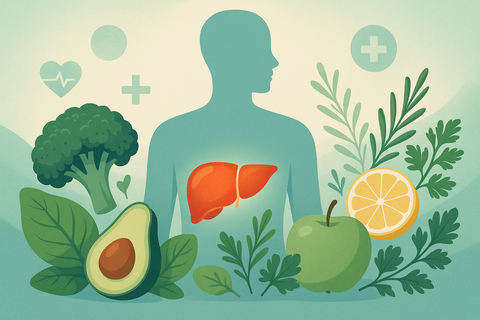Liver anatomy
The liver is located in the upper right part of the abdominal cavity, below the diaphragm and above the stomach, right kidney, and intestines. The liver is a reddish brown organ that has multiple functions.
The liver receives blood supply through two sources:
- oxygenated blood flows from the hepatic artery;
- Nutrient rich blood flows from the hepatic portal vein.
The liver consists of two main lobes, which are made up of 8 segments. The segments are made up of thousands of lobules (small lobes). The lobules are connected to small ducts (tubes), which in turn connect to larger ducts, to ultimately form the common hepatic duct. The common hepatic duct carries the bile produced by liver cells to the gallbladder and duodenum (the first part of the small intestine). Bile is a light yellow or orange liquid that helps digest food.
What are the functions of the liver?
The liver regulates most of the chemical levels in the blood and excretes a product called bile, which helps break down fats and prepares them for later digestion and absorption. All the blood that leaves the stomach and intestines goes through the liver. The liver processes this blood and separates its components, balances them, and creates nutrients for the body to use. It also metabolizes medications in the blood to make them easier for the body to use. Many vital liver functions have been identified. Some of the more popular features include the following:
- bile production, which helps transport waste and break down fats in the small intestine during digestion;
- production of certain proteins for blood plasma;
- production of cholesterol and special proteins to help transport fats throughout the body;
- glucose storage and release, as needed;
- processes hemoglobin to use its iron content (the liver stores iron);
- converts harmful ammonia into urea (one of the end products of protein metabolism that is excreted in the urine);
- clearance of drugs and other harmful substances from the blood;
- regulation of blood coagulation;
- builds resistance to infection by producing immune factors and killing bacteria from the bloodstream;
- bilirubin compensation (if a buildup of bilirubin occurs, the skin and eyes turn yellow).
Once the liver has broken down harmful substances, they are excreted in the bile or blood. Bile by-products enter the intestine and eventually leave the body in the stool. Blood by-products leak into the kidneys and leave the body in the form of urine.
Meet our products:
Liver Health & More https://healthmagneticstore.com/product/liver-health-more
Kidney Support https://healthmagneticstore.com/product/kidney-support-0
Information obtained from UCLA Health. http://healthinfo.uclahealth.org/
This information is not a substitute for professional medical care. Only your doctor can diagnose and treat a health problem.

